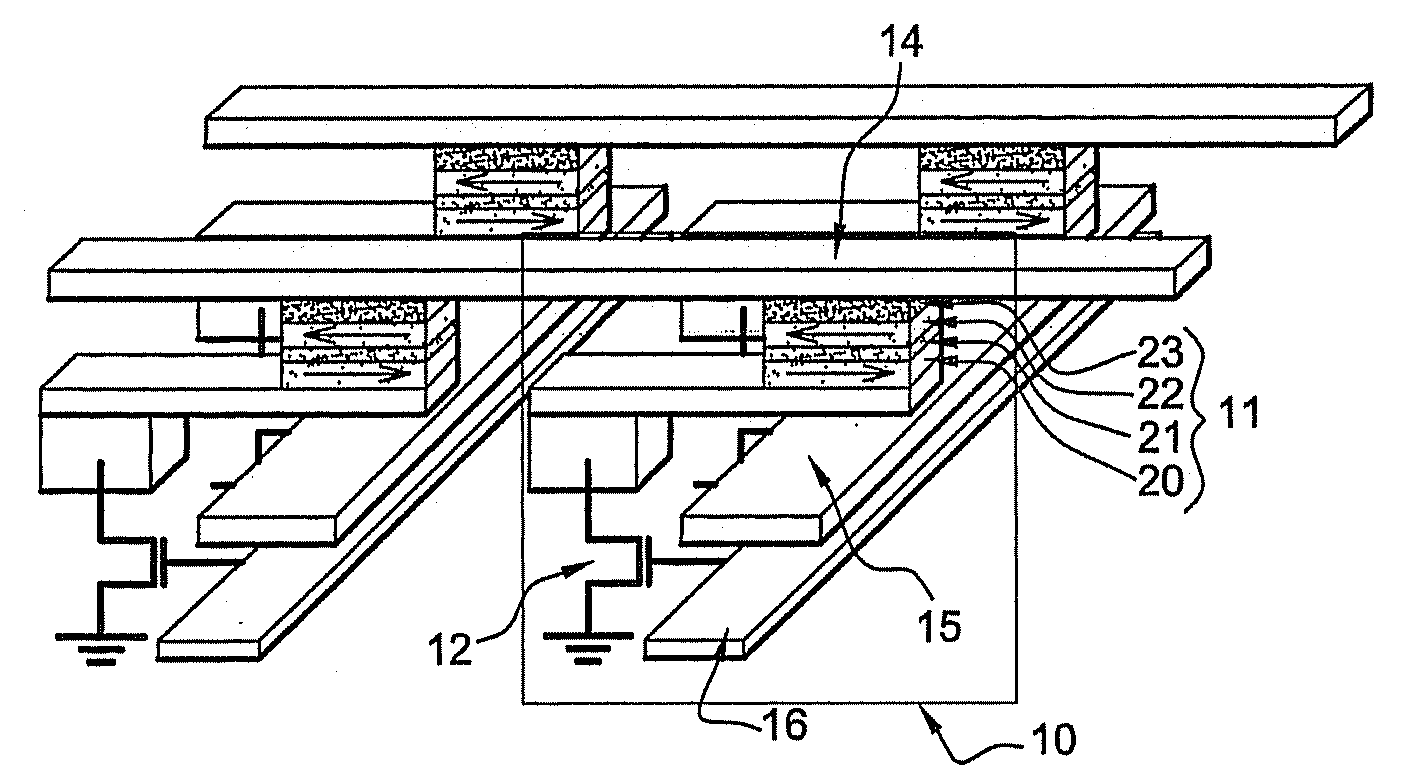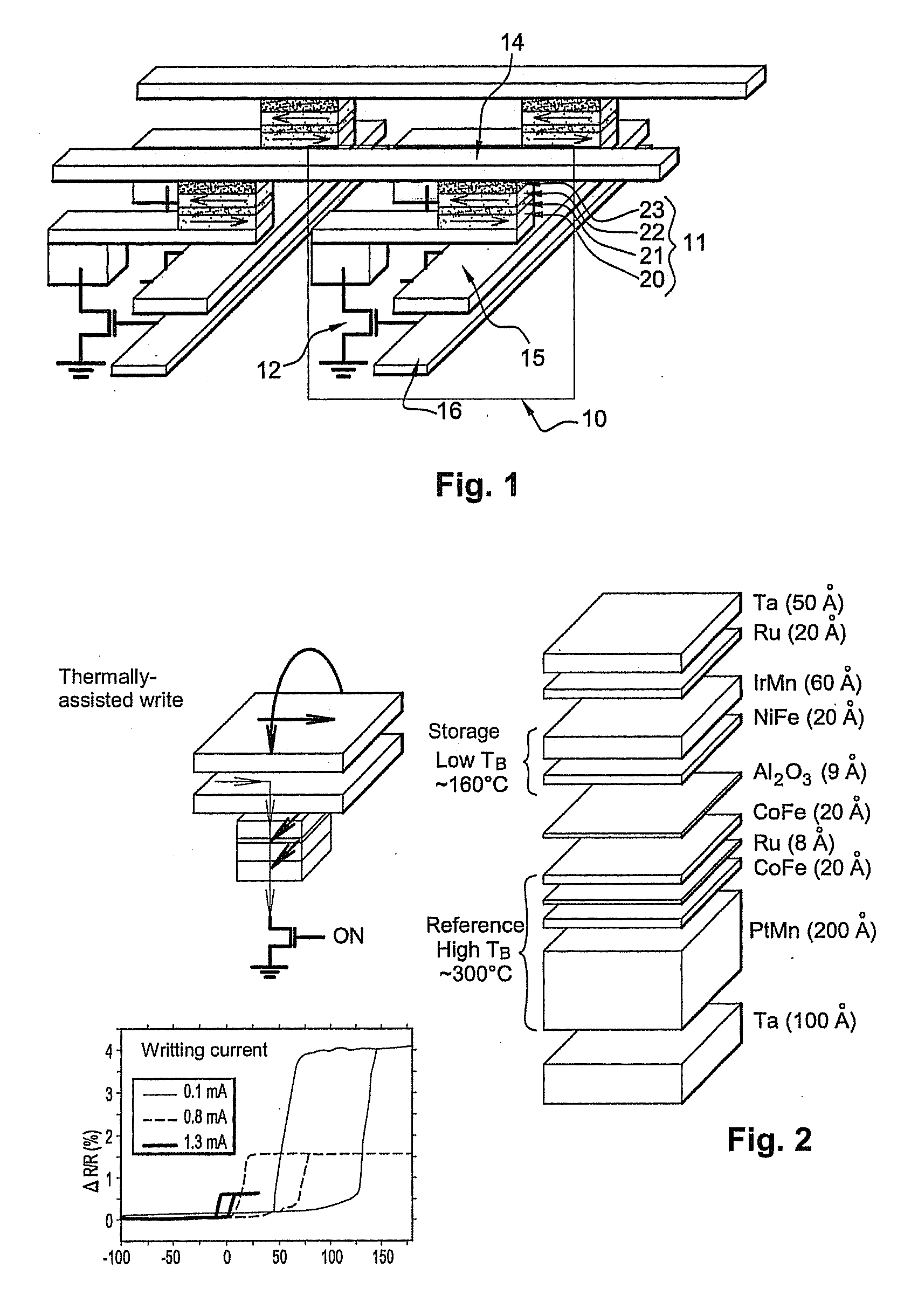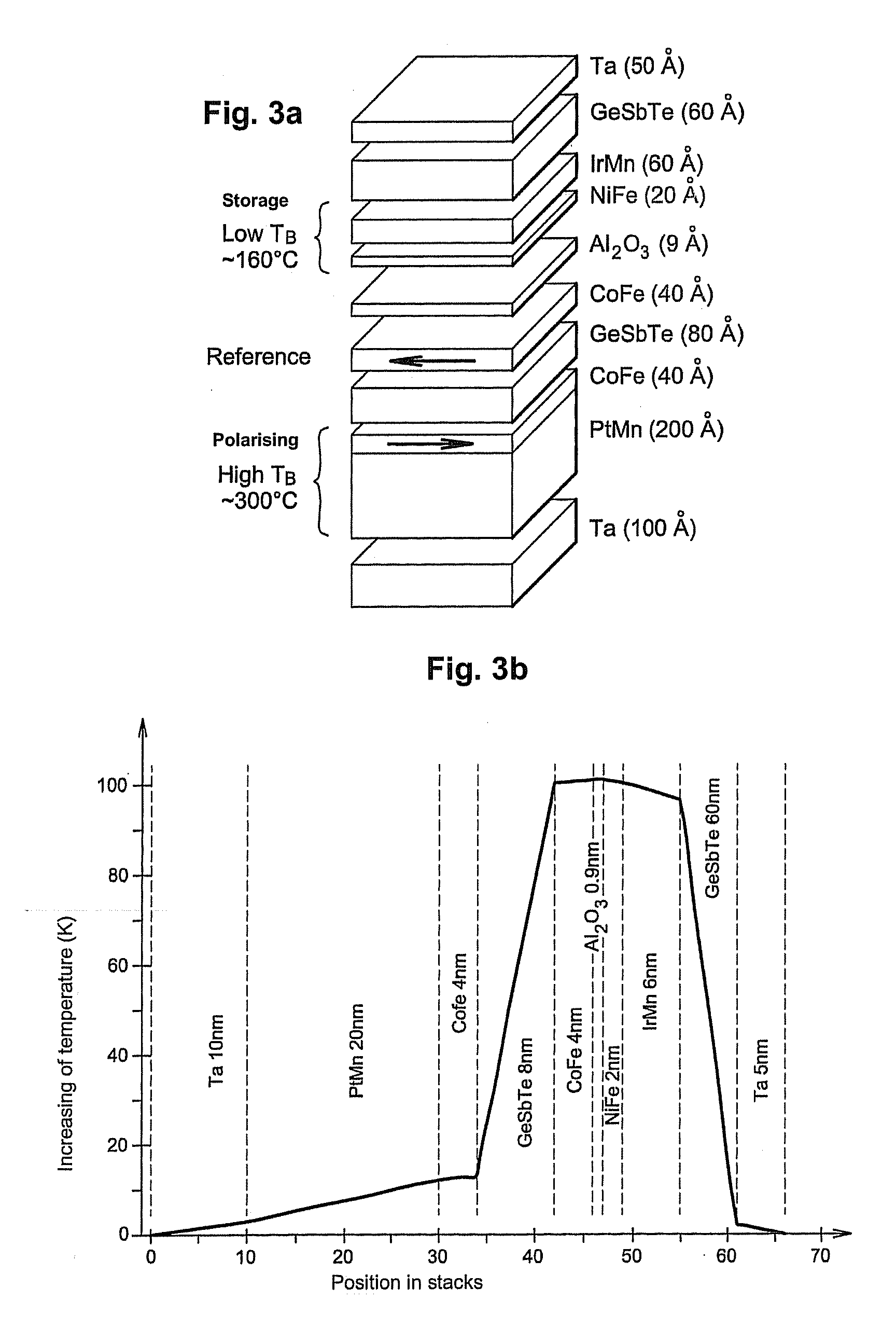Magnetic tunnel junction magnetic memory
a magnetic memory and tunnel junction technology, applied in the field of magnetic tunnel junction magnetic memory, can solve the problems of limited capacity, limit the integration of possible solutions, and the limits of this architecture are clearly apparent, so as to facilitate write address errors and reduce the size of storage cells, the effect of reducing the consequences of this problem
- Summary
- Abstract
- Description
- Claims
- Application Information
AI Technical Summary
Benefits of technology
Problems solved by technology
Method used
Image
Examples
first embodiment
[0081]In a first embodiment described, more particularly, in relation to FIGS. 3 and 4, the stack of the storage cell comprises a tunnel junction with a single insulating barrier that separates the reference and storage layers.
[0082]The storage layer comprises a bilayer that associates a ferromagnetic material with planar magnetization (for example a Permalloy Ni80Fe20 layer having a thickness of the order 1 to 4 nm or a Co90 Fe10 layer having a thickness of 1 to 4 nm) and an antiferromagnetic layer having a moderate blocking temperature, i.e. of the order of 120° C. to 220° C. This blocking temperature must be sufficiently high to ensure that, at standby temperature (not during a write), magnetization of the storage layer is sufficiently pinned to be able to preserve information over a period of several years but not so high as to make it necessary to heat the junction excessively for every write operation because this could cause materials to degrade and power consumption to rise....
second embodiment
[0100]In a second embodiment shown in FIG. 5, the stack consists of a double tunnel-junction structure.
[0101]The storage layer is inserted between the two tunnel barriers with each tunnel barrier having, on the side opposite the storage layer, a reference layer, the magnetization of which is maintained in a fixed direction at the time of a write by magnetostatic interaction with another pinned magnetization layer.
[0102]As in the previous embodiment, here the two reference layers are each separated from the two pinned layers by a thermal barrier, the purpose of which is to confine heat in the central part of the stack at the level where the storage layer is located. These thermal barriers also prevent the pinned layers from being subjected to excessively large temperature fluctuations, thereby avoiding gradual depolarization of their magnetization.
[0103]In this stack, the storage layer advantageously consists of a tri-layer of the CoFe 2 nm / IrMn 5 nm / CoFe 2 nm type comprising a centr...
third embodiment
[0115]In the invention described more particularly in relation to FIG. 6a, the pinned polarizing layer is inserted above the tunnel junction into the conductor which ensures electrical connection to the top of the tunnel junction. Given the greater distance between this polarizing layer and the magnetic storage and reference layers of the tunnel junction compared with the preceding embodiments, flux closure is less satisfactory. Because of this, the field radiated by the polarizing layer acts on the magnetization of the reference layer and also acts significantly on the magnetization of the storage layer. The value of these radiated fields can be calculated by using finite element software such as FLUX3D [CEDRAT: www.cedrat.com]. This value depends on the magnetization of the material of the polarizing layer, its thickness, the width of the conductive line and the distance between said conductive line and the magnetic layers in question.
[0116]The direction of the magnetization of th...
PUM
| Property | Measurement | Unit |
|---|---|---|
| thickness | aaaaa | aaaaa |
| thickness | aaaaa | aaaaa |
| thickness | aaaaa | aaaaa |
Abstract
Description
Claims
Application Information
 Login to View More
Login to View More - R&D
- Intellectual Property
- Life Sciences
- Materials
- Tech Scout
- Unparalleled Data Quality
- Higher Quality Content
- 60% Fewer Hallucinations
Browse by: Latest US Patents, China's latest patents, Technical Efficacy Thesaurus, Application Domain, Technology Topic, Popular Technical Reports.
© 2025 PatSnap. All rights reserved.Legal|Privacy policy|Modern Slavery Act Transparency Statement|Sitemap|About US| Contact US: help@patsnap.com



